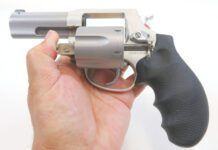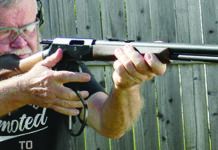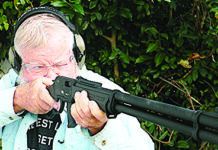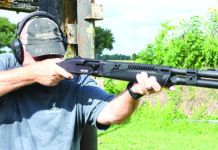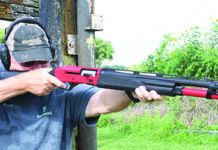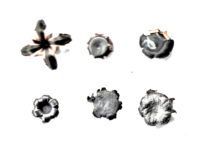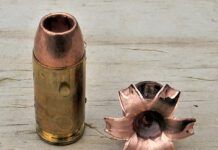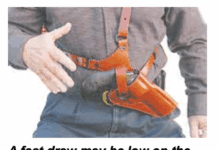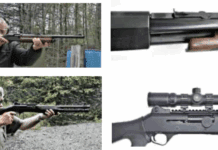Gander Mtn. Firearms Training Academy Opens in Lake Mary, Florida
(GunReports.com) -- Gander Mountain recently opened its first Gander Mtn. Academy in Lake Mary, FL. Gander Mtn. Academy is the first civilian training facility to offer highly skilled instructors, a variety of comprehensive courses, modern multi-media classrooms, a live-fire range, and exclusive virtual simulation technology previously available only to military and law enforcement agencies, including the V-Range simulated firing range.
NRA Club University Scheduled for Phoenix
(GunReports.com) -- NRA Clubs & Associations is pleased to announce the upcoming Club University seminar on Saturday, March 19, at the Embassy Suites Phoenix-Airport Hotel in Phoenix, Arizona. Club University is a unique one-day forum for any group, club or firearm-related business with a desire to enhance their operations. Sign up online at http://www.nrahq.org/clubs/club_university/registration.asp.
50-Count Indictment Returned in International Gun Trafficking Case
(GunReports.com) — United States Attorney George E.B. Holding announced that yesterday a Federal Grand Jury returned a Superseding Indictment charging, Steven Neal Greenoe, a United States citizen, in the illegal export of firearms from the United States to the United Kingdom.
Shootmyash Opens 2011 with a Bang, Targets Airsoft Market
(GunReports.com) -- Shootmyash, a software publisher and manufacturer of smart-targets known as a 'SmartAsh' for the Airsoft market, announced today that it is open for business.
Thoughts on Concealed Carry
For more years than I'd care to recall I've had a gun secluded on my person somewhere. No, I didn't always have a CCW permit. During all those years I've never had to present the gun to stop a fight, but many times along the way I was mighty glad I was armed.
Marlin .308 MX
(GunReports.com) -- Our Marlin came with mighty nicely figured walnut. The buttstock wood matched the wood of the forend, both having prominent contrasting grain and some fiddleback. The wood appeared to have an epoxy-base finish, it being quite hard and scratch-resistant. The checkering was excellent, with decorative touches. It wrapped the forend and was generous at the grip. The butt had a hard-rubber pad that curved to fit the shoulder, though it did little to cut recoil. There were sling studs, too.
Iowa: Constitutional Amendment to Protect State Gun Rights
(GunReports.com) -- A constitutional amendment that would ban any state law that discourages gun ownership is under consideration in the Iowa House. For example, the proposal would make it illegal for the state to require permits for carrying concealed weapons.
Specialty Sports & Supply Honored as 2010 Ruger Retailer of the Year
(GunReports.com) -- Sturm, Ruger & Company, Inc. (NYSE: RGR), has named Specialty Sports & Supply of Colorado Springs, CO the 2010 Ruger Retailer of the Year. Owners Jeff and Kim Lepp were honored at the 2011 SHOT Show with an engraved Mark III pistol to recognize their support for Ruger and achievements in the retail firearms industry.
Utah Celebrates John M. Browning Day at State Capitol
(GunReports.com) -- Utah celebrated January 24, 2011 as John M. Browning Day at the Utah State Capitol. A native of Ogden, Utah, Browning is widely considered the world's greatest firearms designer, and many of his gun designs remain popular around the globe to this day.
Attendee, Media Registration Open for 2011 Elk Camp
(GunReports.com) — The Rocky Mountain Elk Foundation is bringing its annual convention, affectionately known as “Elk Camp,” back to the Reno/Sparks Convention Center, March 3-6, 2011.
Friends of NRA names MidwayUSA National Corporate Sponsor for 2nd Consecutive Year
(GunReports.com) — MidwayUSA, led by CEO Larry Potterfield, has become a Friends of NRA 2011 National Corporate Sponsor for a second consecutive year with a donation of $50,000. The pledge will be used to provide funding for NRA Foundation programs dedicated to youth and women’s shooting sports, range development and law enforcement such as the Eddie Eagle GunSafe® program, Refuse to be a Victim® and Women on Target®.
Smith & Wesson, Thompson/Center Arms, and Walther Introduce New Models
(GunReports.com) -- Smith & Wesson Corp. has announced its 2011 models and extensions to its Smith & Wesson, Thompson/Center Arms and Walther firearms portfolios.



